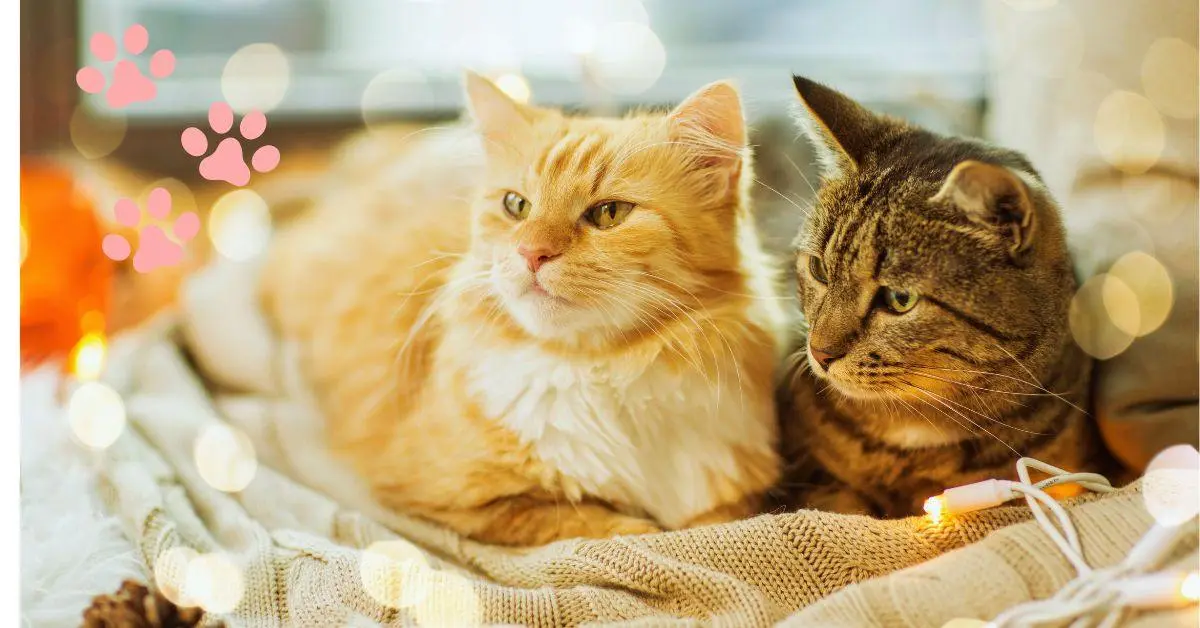Managing the weight of our feline friends can pose a challenge, especially with multiple cats. Dealing with two cats complicates putting a cat on a diet. However, with the right strategies, navigating this journey successfully and helping your cats achieve a healthier weight is possible.
To put one cat on a diet with two cats, separate their feeding areas, and establish scheduled feedings with measured portions. Consult a vet for a tailored diet plan and increase playtime for weight management. Consistency in these steps ensures both cats maintain a healthy life.
How to put a cat on a diet when you have two cats?
Steps for Putting Two Cats on a Diet
- Assess Current Weight and Body Condition: Determine the ideal weight for each cat with guidance from your veterinarian.
- Consult Your Veterinarian: Seek professional advice before making dietary changes to ensure personalized recommendations.
- Choose Suitable Diet: Opt for high-quality food formulated for weight management, meeting both cats nutritional needs.
- Establish Separate Feeding Areas: Create designated spaces to minimize competition and monitor food intake effectively.
- Implement Portion Control: Measure appropriate food amounts based on daily calorie intake and split them into multiple small meals.
- Monitor Progress: Regularly weigh your cats and adjust food portions to maintain steady weight loss or maintenance.
- Encourage Exercise: Engage your cats in play sessions to promote physical activity and provide interactive toys for entertainment.
- Minimize Food Distractions: Set specific meal times and remove uneaten food to prevent overeating or cat rivalry.
Remember, consistency and patience are essential. You can successfully manage your weight and improve your health with proper monitoring, nutrition, and a supportive environment.
How to Get Your Cat to Lose Weight When You Have Other Cats:
Putting an overweight cat on a diet in a multi-cat household requires separate feeding areas, controlled portions, regular exercise, and minimizing food distractions.
Putting One Cat on a Diet with Three Cats:
Consult your veterinarian for individual dietary needs, feed cats separately, monitor treats, and ensure controlled portions for successful weight management.
Best Feeding Schedule for Multiple Cats:
Establish separate feeding stations or a timed feeding schedule to ensure each cat gets proper nutrition without competition or conflicts.
How to put a cat on a diet with multiple cats?
- Consult a Veterinarian: Before making any dietary changes, consult a veterinarian to determine the best diet plan for the overweight cat and ensure it won’t negatively affect the other cats.
- Separate Feeding Areas: Designate different feeding areas for each cat to prevent food stealing. This helps monitor and control each cat’s food intake.
- Scheduled Feeding Times: Establish specific feeding times for all cats instead of free-feeding. This prevents how much and when they eat, making managing the dieting cat’s intake easier.
- Measure Portions: Use a measuring cup or scale to serve precise food portions based on each cat’s dietary needs, which is especially important for the cat on a diet.
- Choose the Right Food: Select a high-protein, low-carbohydrate diet for the overweight cat, as your vet recommends, while considering the nutritional needs of the other cats.
- Gradual Transition: Slowly introduce the new diet over a week or more, mixing it with the current food to avoid digestive upset and increase acceptance.
- Monitor Weight and Health: Regularly weigh the dieting cat and watch for health changes. Adjust the diet plan as recommended by your veterinarian.
- Increase Exercise: Encourage more play and activity for all cats, focusing on the overweight ones, to help burn calories and reduce weight.
- Limit Treats: Reduce or eliminate treats, especially for the overweight cat, or choose low-calorie, healthy alternatives.
- Stay Consistent: Maintain the feeding schedule, portion control, and diet plan consistently across all cats, adjusting as necessary for each cat’s health and weight goals.
- Regular Veterinary Check-ups: Schedule follow-up visits to monitor the overweight cat’s progress and make any needed adjustments to the diet plan.
Feedback and Additional Tips
Feed cats separately, control portions, introduce interactive toys, consult with a veterinarian, and monitor progress closely for effective weight management.
Successfully managing your cats’ weight with a diet involves careful planning, consultation with a veterinarian, separate feeding routines, controlled portions, and promoting exercise. Prioritize their health and well-being for a healthier and happier life.
